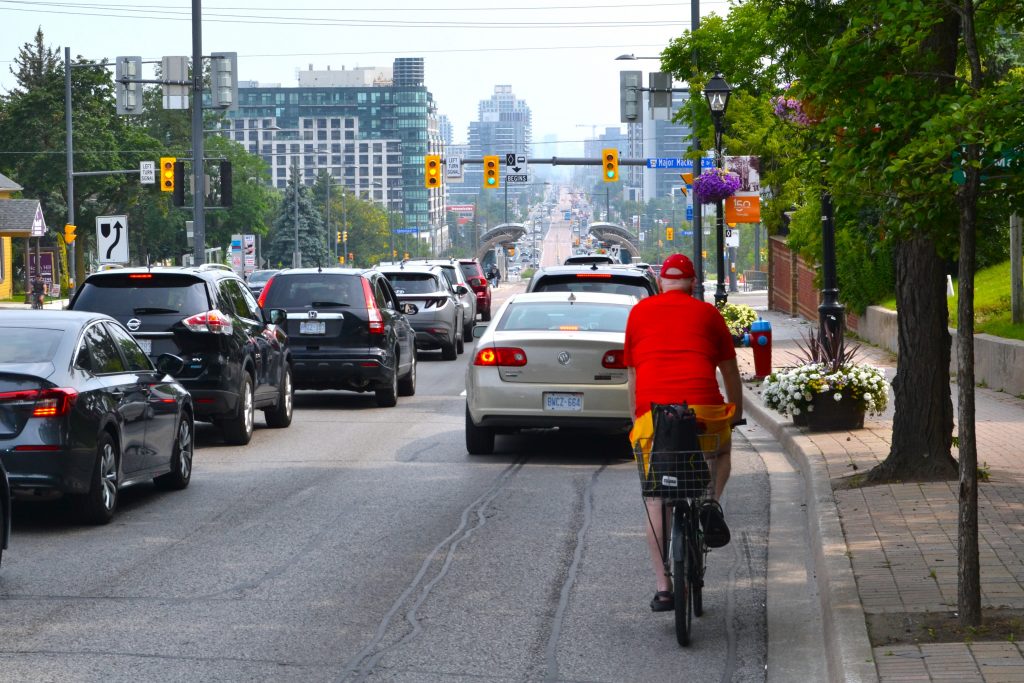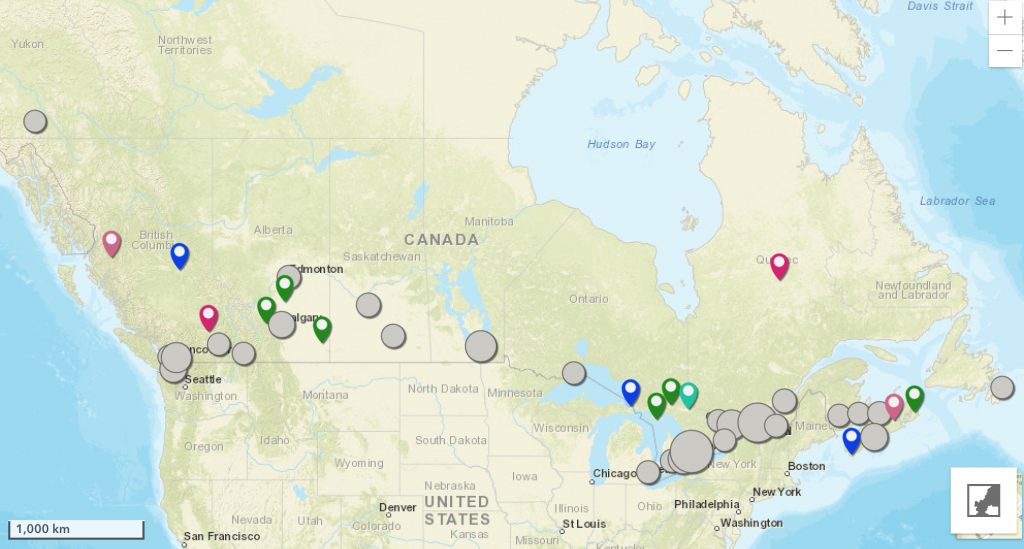Improving transportation infrastructure for the aging population
Victoria is a graduate student in the Department of Geography at McGill University in Montreal, she studies older adults’ mobility.
Improvements in technology and health care have led to people living longer, healthier, and wealthier lives (Bannister & Bowling, 2004 & Stat Can, 2022). In the next 20 years, Canada’s older adult population is expected to grow by almost 70% (CIHI, 2017). The subset of adults 75 and older is growing the fastest within the older population. By 2050, the expectation is for the 85 and older population to reach more than 2.7 million people as the last cohort of baby boomers, born in 1965, turns 85 (Statistics Canada, 2022). Additionally, the 65+ population is growing faster than Canada’s working-age population. These growth trends will continue to increase healthcare costs, straining government budgets in the years ahead. Therefore, the health and well-being of Canada’s aging population are more crucial than ever.
The importance of independent mobility
A significant factor in healthy aging is mobility independence, or the ability to transport and access commodities and neighborhood facilities and participate in meaningful social, cultural, and physical activities without assistance or supervision (Glazener et al., 2021). Mobility independence promotes healthy aging through physical activity and engagement in community activities which sustain cognitive ability, positively influencing mental well-being. However, driving cessation is a reality for many older people. Driving cessation happens for many reasons, as health and ability decline with age. In Canada, people 70 and older are more likely to be involved in car crashes than any other age group besides drivers 25 and younger (HealthLink BC, 2023). Older drivers are generally more prone to injury, making them more likely to get hurt or die from these crashes, which is a large consideration in driving cessation.
Mobility independence closely links to quality of life; therefore, when the ability to drive is gone, we see many impacts on health. Driving cessation is associated with lower life satisfaction, less social involvement, more time spent alone, a reduced network of friends, and less time caregiving (Mezuk & Rebok, 2008). There is also an association with declines in physical ability, deterioration of general health, and a more rapid decline in general cognitive ability (Chihuri et al., 2016). With these associations, we see driving cessation contributing to various health problems, particularly depression. Research shows that driving cessation almost doubles the risk of more significant depressive symptoms in older adults (Marottoli et al., 2015).

Several community-based studies have identified specific socioeconomic and sociodemographic factors associated with driving cessation, such as income, sex, employment status, education, marital status, co-resident status, urban residence and geographic location. Previous work has indicated that driving cessation is most common among drivers that are women, older, non-White, less educated, and less likely to live with a spouse (Choi et al., 2012). Historically, older women outlive their driving days by ten years, while older men outlive driving days by six years (Foley et al., 2002). When driving is not an option, meeting the transportation needs of older adults is a challenge, especially for those more vulnerable and those in suburban and rural areas, where most older adults live in North America. With mobility linked to the quality of life, we must improve the transition from driving to non-driving and ensure mobility options are available for older adults.
Solutions
So far, in Canada, a few solutions are being discussed. First, a standard solution to many transportation problems is promoting walkability, use of public transit accessibility, and increasing dense mixed-use neighborhoods. We know that public transit has a positive effect on health outcomes. Studies have shown that almost four times the number of public transportation users met public health physical activity guidelines than car commuters (Batista et al., 2018). In Montreal, public transportation users burn 1.73 times as many calories during their commute as car commuters (Apparicio et al., 2018). Driving cessation is often inevitable, and we need to improve transportation alternatives for older adults. Improving public transit and walkability can ease the transition for older populations while promoting healthy aging and quality of life. Appropriate public transit and walkability can offer more independence than private alternatives such as relying on rides from others.
While higher density, public transit use, cycling, and walking can promote healthy aging, we must understand that the needs of older populations are not homogenous. Many older people face fragility and desire to age in place. In this case, on-demand transit service options are becoming more common. On-demand transit services can provide flexible specialized services to support accessibility, especially in low-density or urban areas. Ultimately, increasing transportation options by expanding investment in multimodal community transportation and coordination planning activities such as on-demand local transit while promoting walkable and bikeable communities can be an effective solution.

Future Research
In the next decade, studying the aging population and their travel behaviour will be essential for planning. This research on population growth will be vital to planning for allocation of government resources and accounting for healthcare costs. Thus far, cross-sectional studies have shown the impacts of driving cessation. However, more longitudinal research is needed to follow developments or changes in the travel behaviour of the aging population at both the group and the individual levels. Understanding these developments and changes is essential in forecasting the needs of growing current and future generations.
One longitudinal study of interest is the Canadian Longitudinal Study on Aging (CLSA). The CLSA, collected every three years, is a national, long-term study that provides data on more than 50,000 individuals between the ages of 45 and 85. The participants are followed for 20 years or until death (Raina et al., 2009). For my master’s thesis, I will use the CLSA data to analyze how the built environment and transportation options impact older Canadians’ travel behaviour and the associated health outcomes. I will also investigate how travel behaviour and health outcomes for older Canadian adults vary by sociodemographic factors. This research will allow us to understand better the health outcomes associated with travel behavior and mode of choice, especially alternatives to driving. A better understanding of travel behavior and health outcomes of the aging population will help us plan transportation policies and infrastructure to support their healthy aging.
Cover photo by Philippe Leone on Unsplash
References
Apparicio, P., Gelb, J., Carrier, M., Mathieu, M.-È., & Kingham, S. (2018). Exposure to noise and air pollution by mode of transportation during rush hours in Montreal. Journal of Transport Geography, 70, 182–192. https://doi.org/10.1016/j.jtrangeo.2018.06.007
Batista Ferrer, H., Cooper, A., & Audrey, S. (2018). Associations of mode of travel to work with physical activity, and individual, interpersonal, organisational, and environmental characteristics. Journal of Transport & Health, 9, 45–55. https://doi.org/10.1016/j.jth.2018.01.009
Canadian Institute for Health Information. (2017). Infographic: Canada’s seniors population outlook: Uncharted territory | CIHI. https://www.cihi.ca/en/infographic-canadas-seniors-population-outlook-uncharted-territory
Chihuri, S., Mielenz, T. J., DiMaggio, C. J., Betz, M. E., DiGuiseppi, C., Jones, V. C., & Li, G. (2016). Driving Cessation and Health Outcomes in Older Adults. Journal of the American Geriatrics Society, 64(2), 332–341. https://doi.org/10.1111/jgs.13931
Choi, M., Mezuk, B., Lohman, M. C., Edwards, J. D., & Rebok, G. W. (2012). Gender and Racial Disparities in Driving Cessation Among Older Adults. Journal of Aging and Health, 24(8), 1364–1379. https://doi.org/10.1177/0898264312460574
Cui, J., Loo, B. P. Y., & Lin, D. (2017). Travel behaviour and mobility needs of older adults in an ageing and car-dependent society. International Journal of Urban Sciences, 21(2), 109–128. https://doi.org/10.1080/12265934.2016.1262785
Dickerson, A., Molnar, L., Polgar, J., Eby, D., & Classen, S. (2019). Transportation and Aging: An Updated Research Agenda for Advancing Safe Mobility—Anne E. Dickerson, Lisa Molnar, Michel Bedard, David W. Eby, Sherrilene Classen, Janice Polgar. https://journals.sagepub.com/doi/abs/10.1177/0733464817739154
Foley, D., Heimovitz, H., Guralnik, J., & Brock, D. (2002). Driving Life Expectancy of Persons Aged 70 Years and Older in the United States. American Journal of Public Health, 92, 1284–1289. https://doi.org/10.2105/AJPH.92.8.1284
Government of British Columbia. (n.d.). Healthy Aging: Is It Time to Stop Driving? | HealthLink BC. Retrieved March 26, 2023, from https://www.healthlinkbc.ca/more/aging-well/healthy-aging-it-time-stop-driving
Government of Canada, S. C. (2022, April 27). A portrait of Canada’s growing population aged 85 and older from the 2021 Census. https://www12.statcan.gc.ca/census-recensement/2021/as-sa/98-200-X/2021004/98-200-x2021004-eng.cfm
Marottoli, R. A., de Leon, C. F. M., Glass, T. A., Williams, C. S., Cooney Jr, L. M., Berkman, L. F., & Tinetti, M. E. (1997). Driving Cessation and Increased Depressive Symptoms: Prospective Evidence from the New Haven EPESE. Journal of the American Geriatrics Society, 45(2), 202–206. https://doi.org/10.1111/j.1532-5415.1997.tb04508.x
Mezuk, B., & Rebok, G. W. (2008). Social integration and social support among older adults following driving cessation. The Journals of Gerontology. Series B, Psychological Sciences and Social Sciences, 63(5), S298-303. https://doi.org/10.1093/geronb/63.5.s298
Moniruzzaman, Md., Páez, A., Nurul Habib, K. M., & Morency, C. (2013). Mode use and trip length of seniors in Montreal. Journal of Transport Geography, 30, 89–99. https://doi.org/10.1016/j.jtrangeo.2013.03.007
Raina, P. S., Wolfson, C., Kirkland, S. A., Griffith, L. E., Oremus, M., Patterson, C., Tuokko, H., Penning, M., Balion, C. M., Hogan, D., Wister, A., Payette, H., Shannon, H., & Brazil, K. (2009). The Canadian Longitudinal Study on Aging (CLSA)*. Canadian Journal on Aging / La Revue Canadienne Du Vieillissement, 28(3), 221–229. https://doi.org/10.1017/S0714980809990055
You may also like
 Moving towards cycling equity in Toronto: infrastructures, social contexts, and spatial difference
Moving towards cycling equity in Toronto: infrastructures, social contexts, and spatial difference
Thomas van Laake, doctoral researcher at the University of Manchester Introduction In recent years, equity and justice have become central issues in bicycle planning and… Read More
 Mobilizing for transportation workers: First steps towards a more just vehicle-for-hire industry in Toronto
Mobilizing for transportation workers: First steps towards a more just vehicle-for-hire industry in Toronto
by Thorben Wieditz, Director of Metstrat Digital platforms are reshaping how we work, live, and get around. The rise of the… Read More
 New Interactive Map and Updated Catalogue of Community Initiatives Addressing Transport Poverty Provides Valuable Repository of Local Knowledge for Mobilizing Justice Researchers and Partners
New Interactive Map and Updated Catalogue of Community Initiatives Addressing Transport Poverty Provides Valuable Repository of Local Knowledge for Mobilizing Justice Researchers and Partners
Nancy Smith Lea is the Community Co-Lead of the Mobilizing Justice Transportation Modes Thematic Working Group and a Senior Advisor at The Centre for Active… Read More
